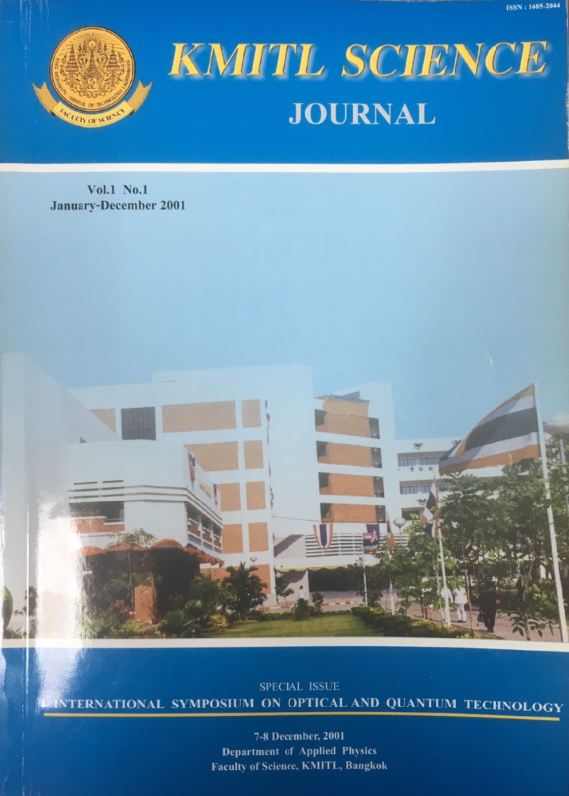Mathematical Modeling of a Thin Two-link Flexible Robot Arm
Main Article Content
Abstract
More than three decades, flexible link robot arms have attracted attention from the researchers around the world due to advantages over conventional robot arms. The advantages include less overall mass, less energy consumption, smaller actuators and faster responses. This paper focuses on mathematical modeling for a thin two-link flexible robot arm operating in planer plane. The model was derived based on energy model and Lagrangian method. Computer simulation is also given to validate the effectiveness of the model. The results yield a satisfaction and imply the application of the area for applied science and engineering field in robotics and automation.
Keywords: mathematical modeling
Corresponding author: E-mail: cast@kmitl.ac.th
Article Details
Copyright Transfer Statement
The copyright of this article is transferred to Current Applied Science and Technology journal with effect if and when the article is accepted for publication. The copyright transfer covers the exclusive right to reproduce and distribute the article, including reprints, translations, photographic reproductions, electronic form (offline, online) or any other reproductions of similar nature.
The author warrants that this contribution is original and that he/she has full power to make this grant. The author signs for and accepts responsibility for releasing this material on behalf of any and all co-authors.
Here is the link for download: Copyright transfer form.pdf
References
[2] G.G. Hasting and W.J. Book, Verification of a linear Dynamic Model for Flexible Robotic Manipulation, IEEE International Conference on Robotics and Automation, pp. 1024-1029, 1986.
[3] A.D. Luca, Explicit Dynamic modeling Manipulator, Proceedings of the 29th Conference on Decision and Control, pp. 528-530, 1990.
[4] X.Qi and G. Chen, Mathematical Modeling of Kinematics and Dynamics of Certain Single Flexible Link Robot Arms, First IEEE Conf. On Control Applications, Vol.1, pp. 288-293, 1993.
[5] R.H.Jr. Cannon and E. Schmitz, Inertial Experiment on the End-point Control of Flexible One-Link Robot, The International journal of Robotic Research, Vol.3, No.3, pp. 62-75, 1994.
[6] P. Sooraksa, Mathematical modeling of a Single Flexible-Link Robot Arm with Damping, 20th Electrical Engineering Conference, Vol.1, pp. 313-319, 1997.


